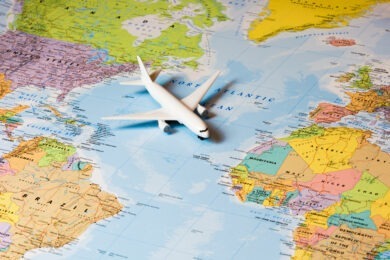Traveling internationally as an individual is tricky. Coordinating international travel for large groups? That requires a lot more planning and forethought.
Smart Meetings spoke with Harmony Nordgren, vice president of operations at Cyberbacker, about things to consider when setting up international travel for your attendees.
“Coordinating international travel is far more different and difficult than coordinating travel domestically because event planners must account for schedules and personal issues (health conditions that may flare up in long-haul travel, fear of flying, claustrophobia, etc.),” Nordgren says. “But also professional limitations (i.e., client-facing roles that require regular communication, accounting for jetlag when planning events), as well as travel restrictions such as attaining visas to go abroad, understanding which vaccines are needed if any when traveling to high-risk countries, accounting for illness that may occur from long-haul travel (like Covid) and more.”
Common International Travel Challenges
It’s easy to think everything is under control when setting up international travel but there exists common challenges that, while giving attention to some you may neglect other, just as important, concerns. Nordgren says these are common challenges she sees when coordinating international travel:
- Jetlag: Help people understand time-zone jumps and provide a proposed rest schedule that aligns with the time zone they’re traveling to
- Fares: Plan far in advance and make sure all flyers have appropriate documentation ahead of time
- Travel time: Provide a schedule with dates, times and locations, a list of essential items they should bring, and consider some activities to occupy people during waiting times
- Delays: Have potential hotels identified in case of any delays or layovers
Also, it’s recommended to keep in mind peak travel times, June to September, which Nordgren says makes these factors more expensive and difficult to plan.
Traveling to the U.S. Is Getting Difficult for Some
Covid remains a topic of concern when traveling and the United States hasn’t been particularly flexible when it comes to letting people back into the country from certain places. According to the CDC, regardless of citizen or vaccination status, travelers coming to the United States from China, Hong Kong, or Macau, and those traveling from Seoul, Toronto and Vancouver who have been in China, Hong Kong, or Macau in the past 10 days are required to show a negative Covid test taken no more than two days before departure.
Read More: Adventures in International Meetings
All others arriving in the U.S. are recommended to take a test as close to the time of departure as possible, although it is not required.
Nordgren says the Visa process is getting more challenging to comply with, as well, which she believes is mainly due to Covid. For many travelers with a U.S. passport, traveling outside of the country is relatively easy but visitors coming to the U.S. generally have a much tougher time.In fact, the majority of the world’s population required a visa to enter the U.S., and visas are not required for 40 countries, including the United Kingdom, Australia, Japan and most European countries.
In 2022, more candidates were denied visas than were approved, but the U.S. embassy didn’t provide any information about why this happened.
Health Challenges
Nordgren says health issues while traveling is a big factor that is often overlooked. Your immune system can be significantly compromised when flying for extended periods, especially if you are already at risk. As international travel is often longer than domestic travel, the possibility of illness is something to consider.
In addition to the possibility of catching Covid while flying, another concern for longer flights—typically those that are more than four hours—is the development of deep vein thrombosis (DVT), where blood clots form in the legs when sitting for long periods. These blood clots can then travel to other parts of the body, including the lungs, which can be fatal.
According to the CDC, developing a blood clot on a long-haul flight isn’t that common. Those who typically developed travel-induced DVT usually have other health risks as well, such as obesity, pregnancy, a previous blood clot and varicose veins, among others. To remedy this, the CDC recommends moving and stretching your legs frequently. Another remedy recommended often is wearing compression socks during your flight, as they promote blood flow in the legs.
Although you can never be too sure what will happen when planning internationally, Nordgren advises, “Plan well, and plan in advance. Always have a backup plan for any potential problems that may arise.”




